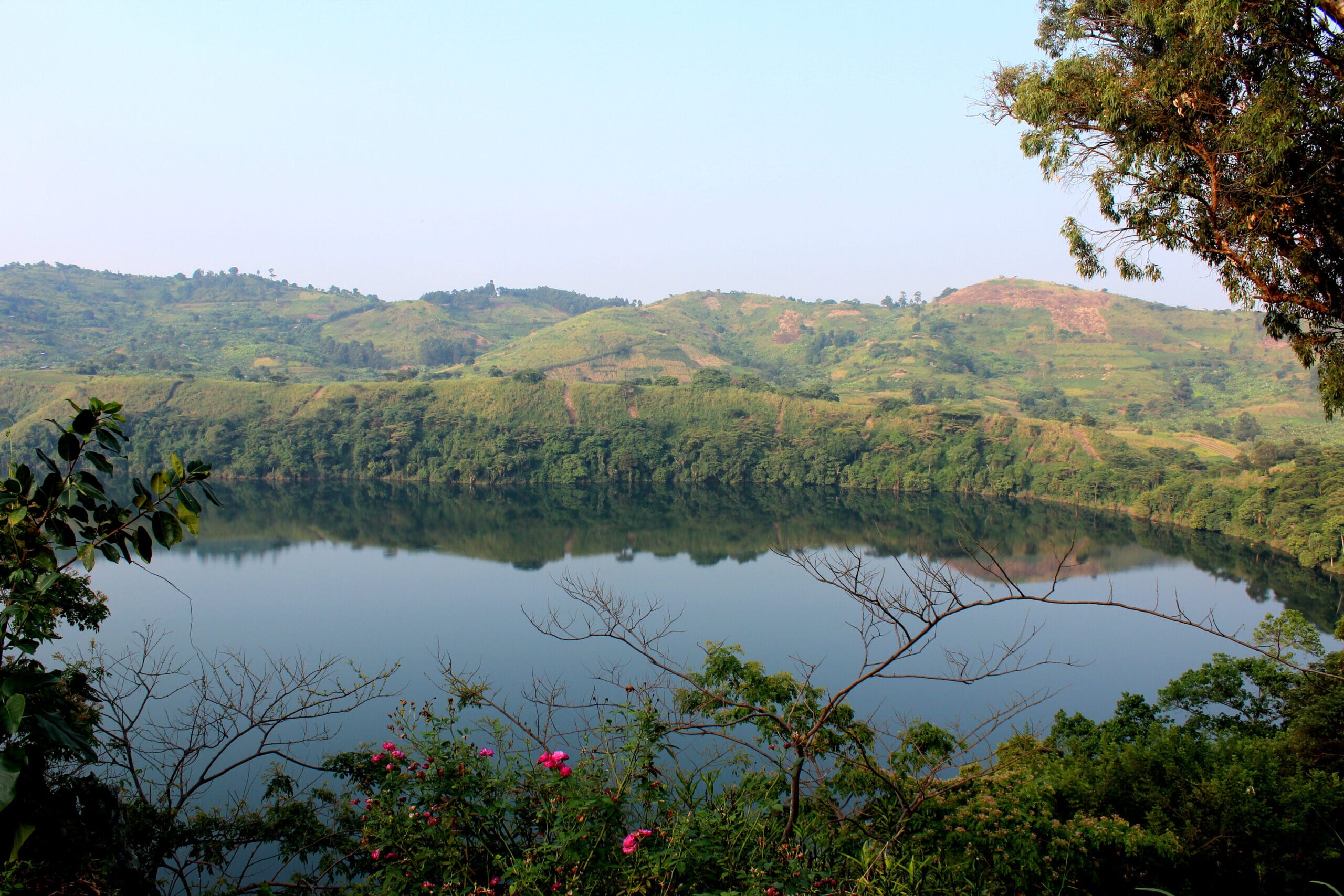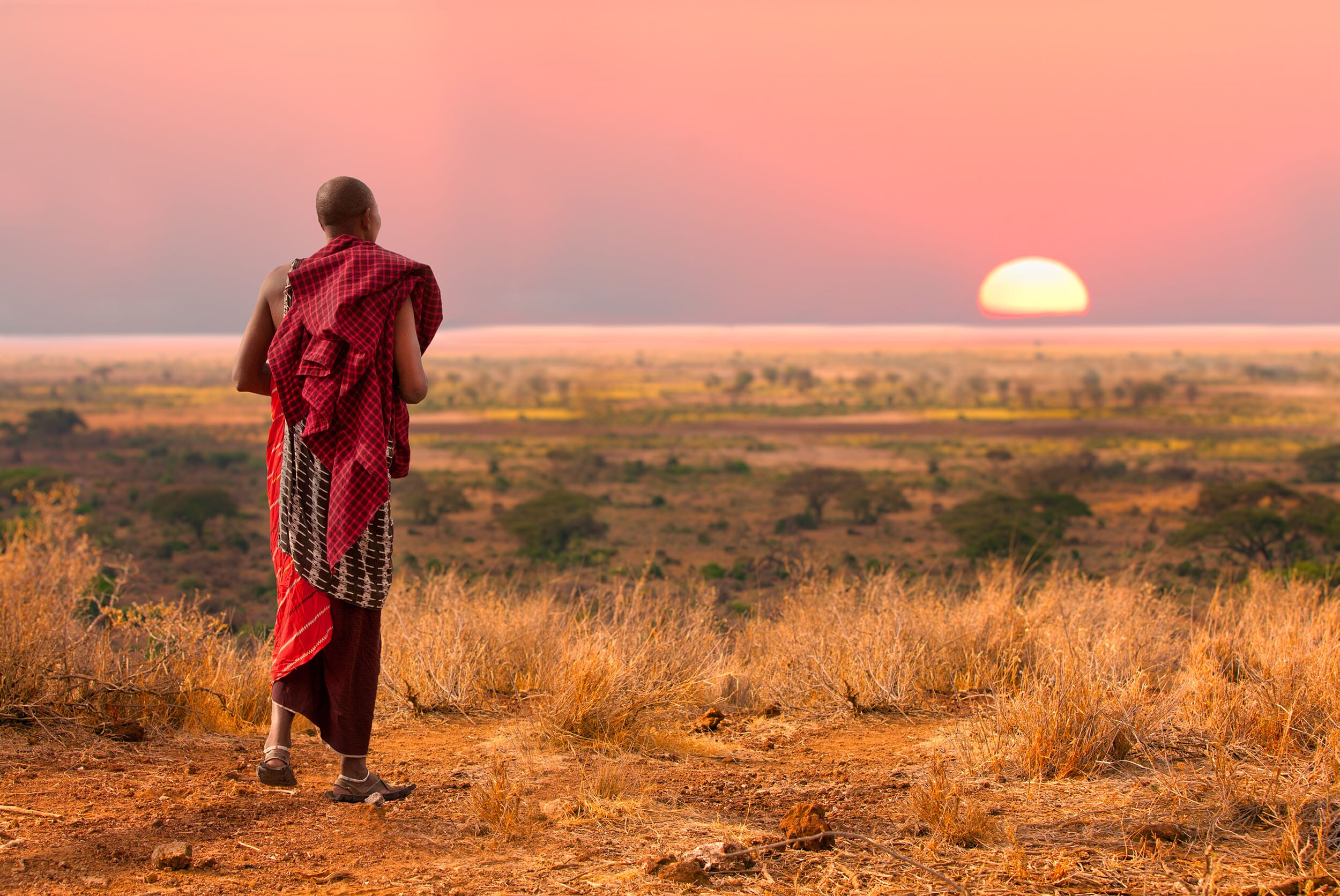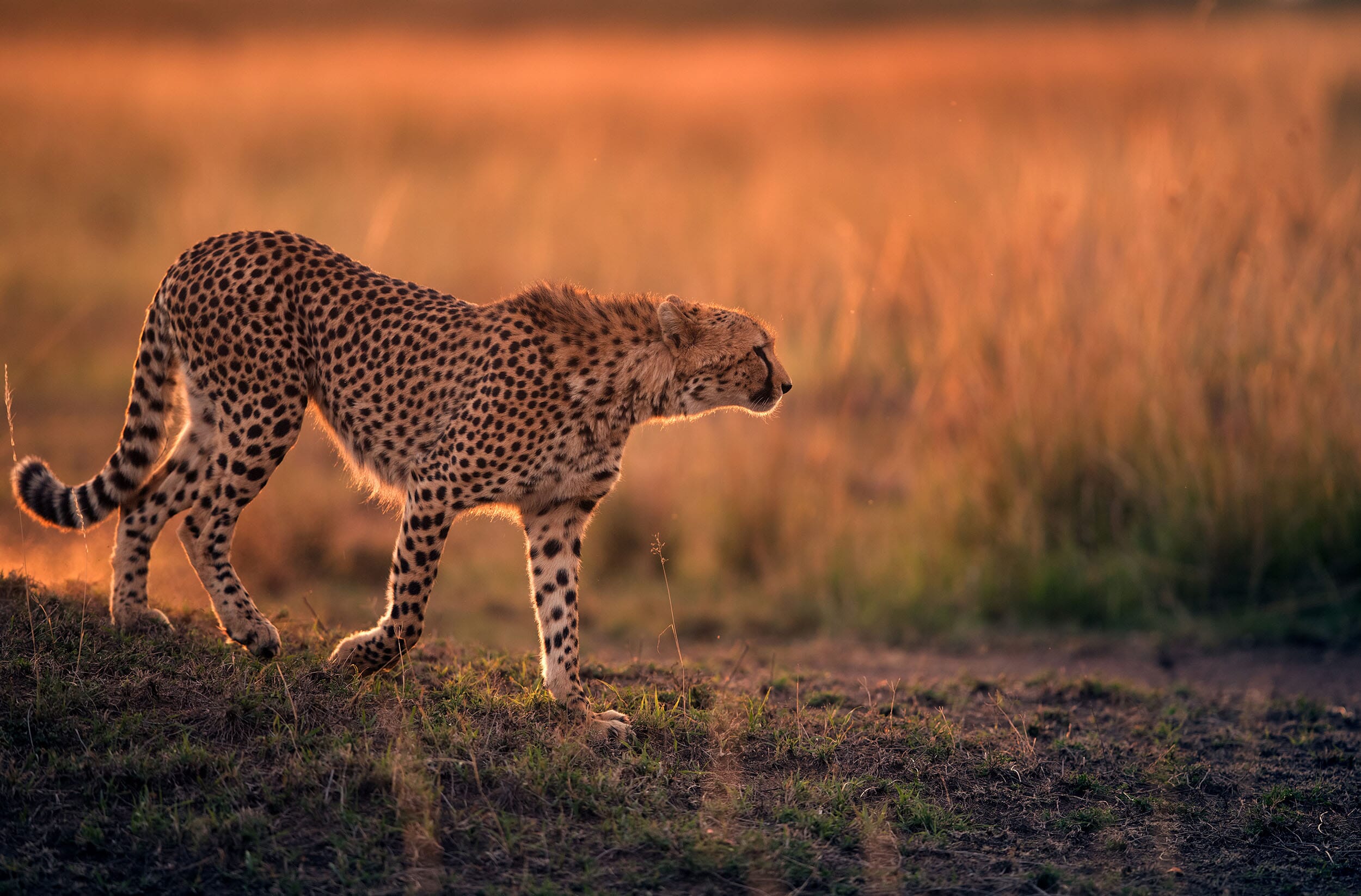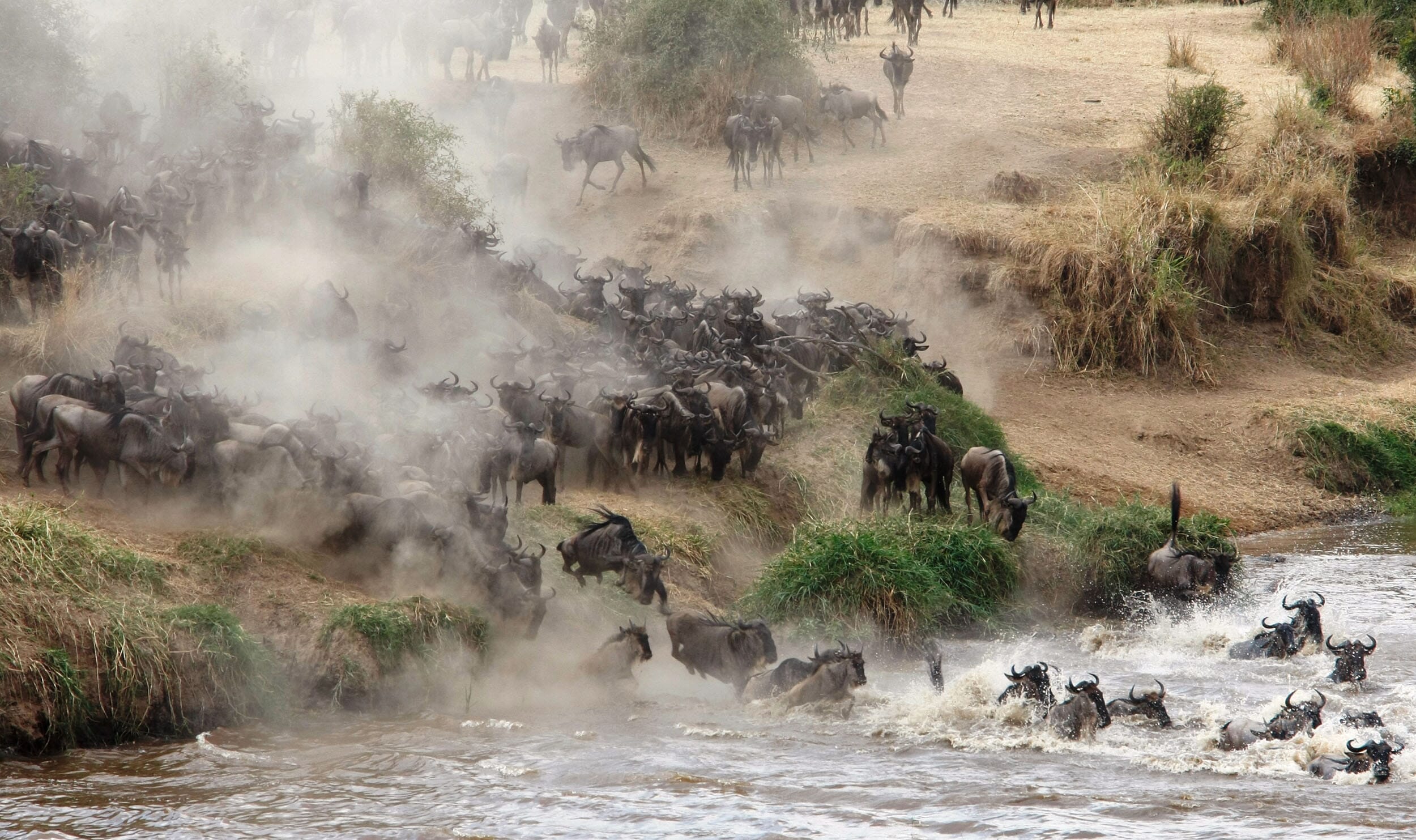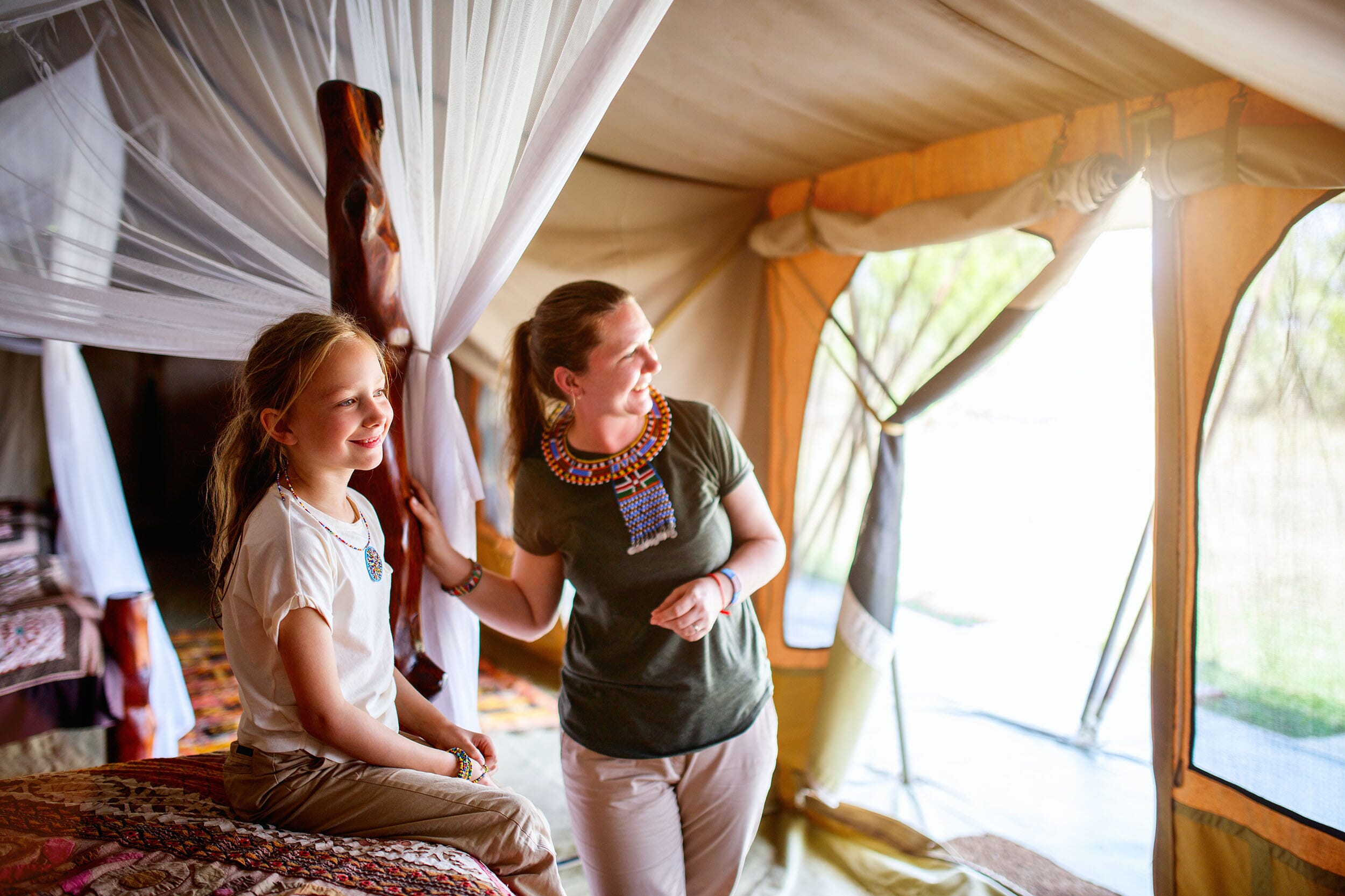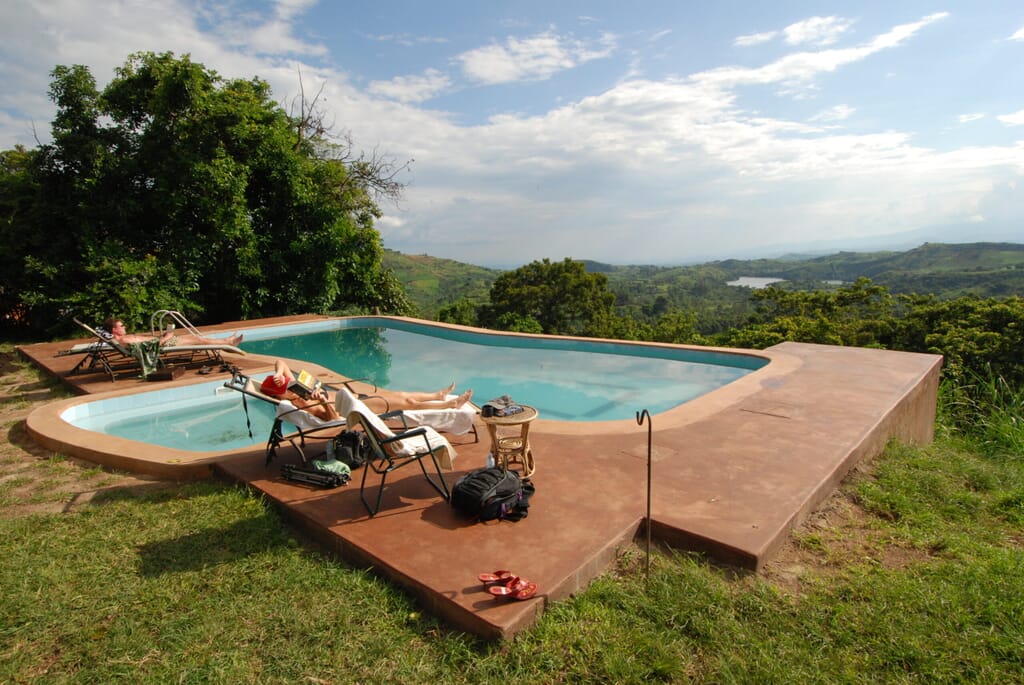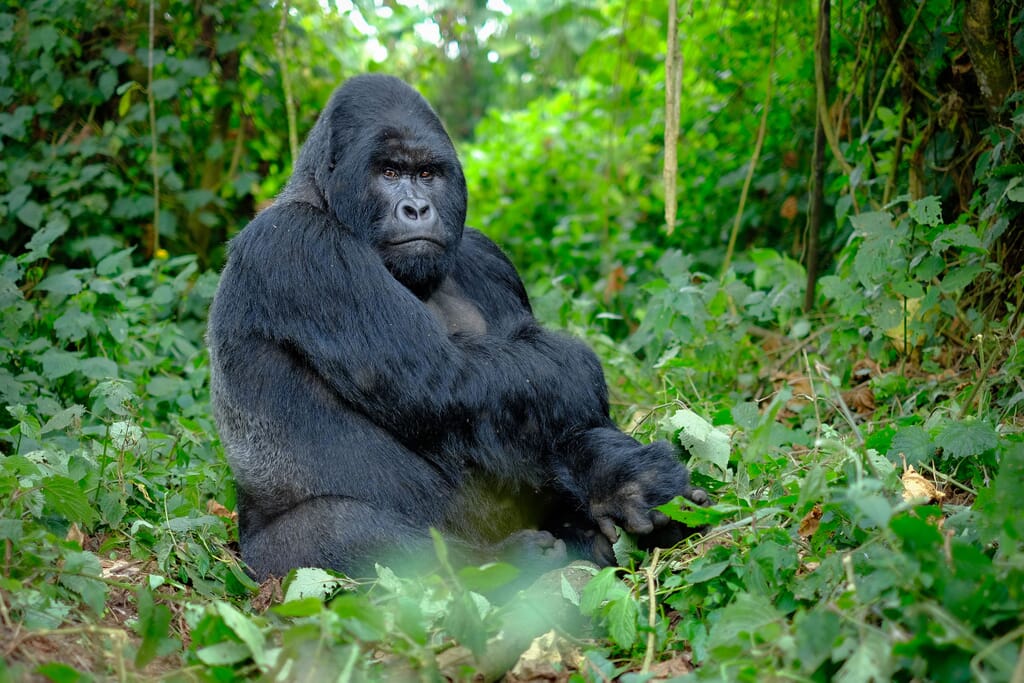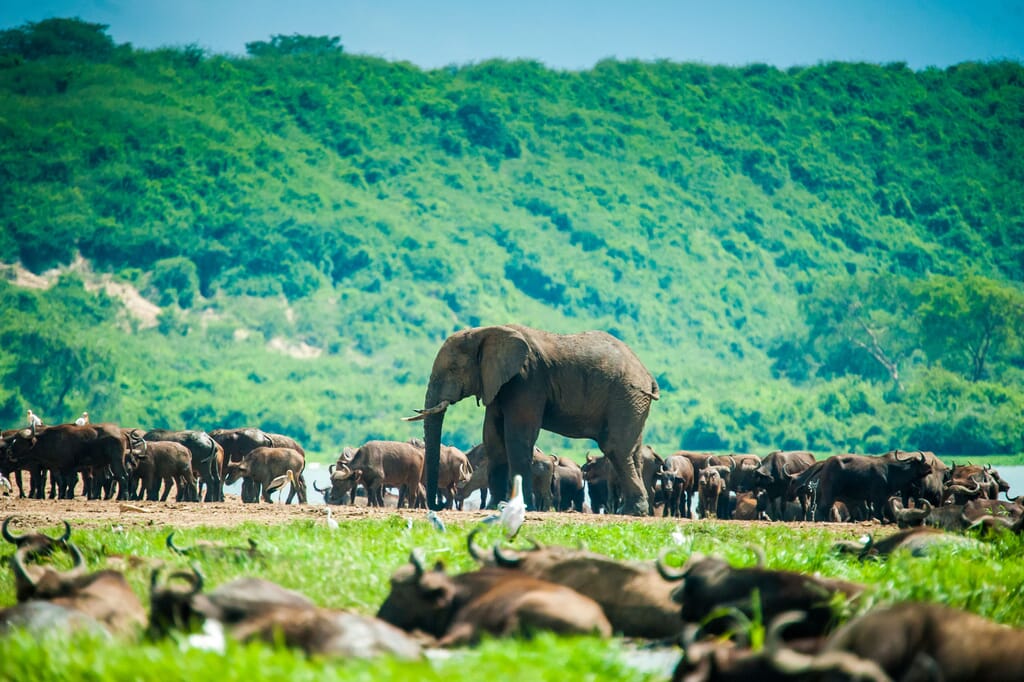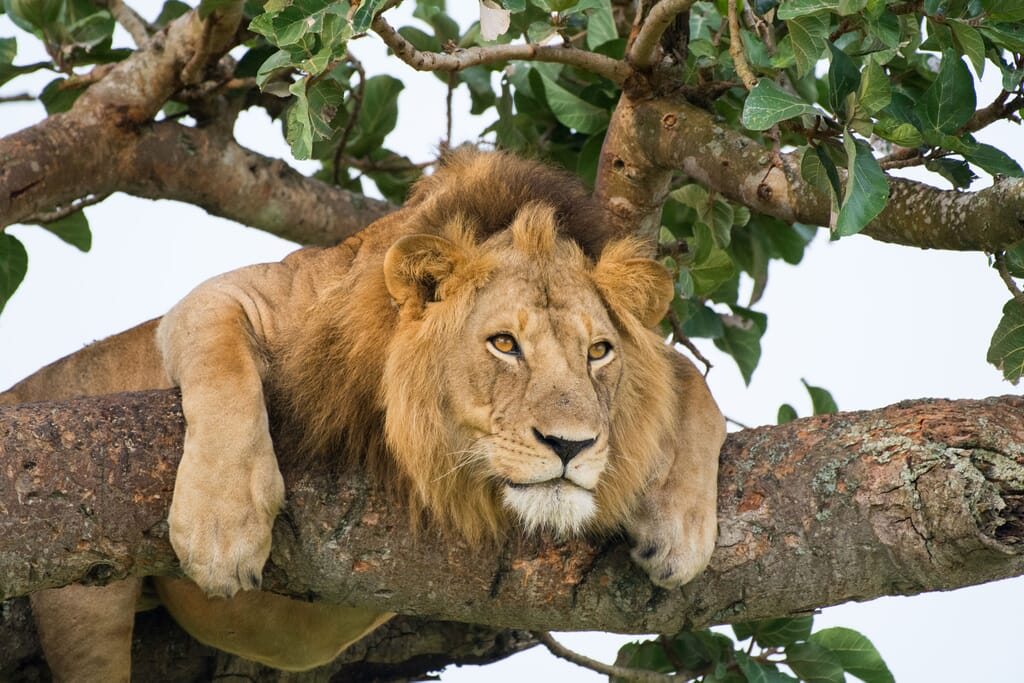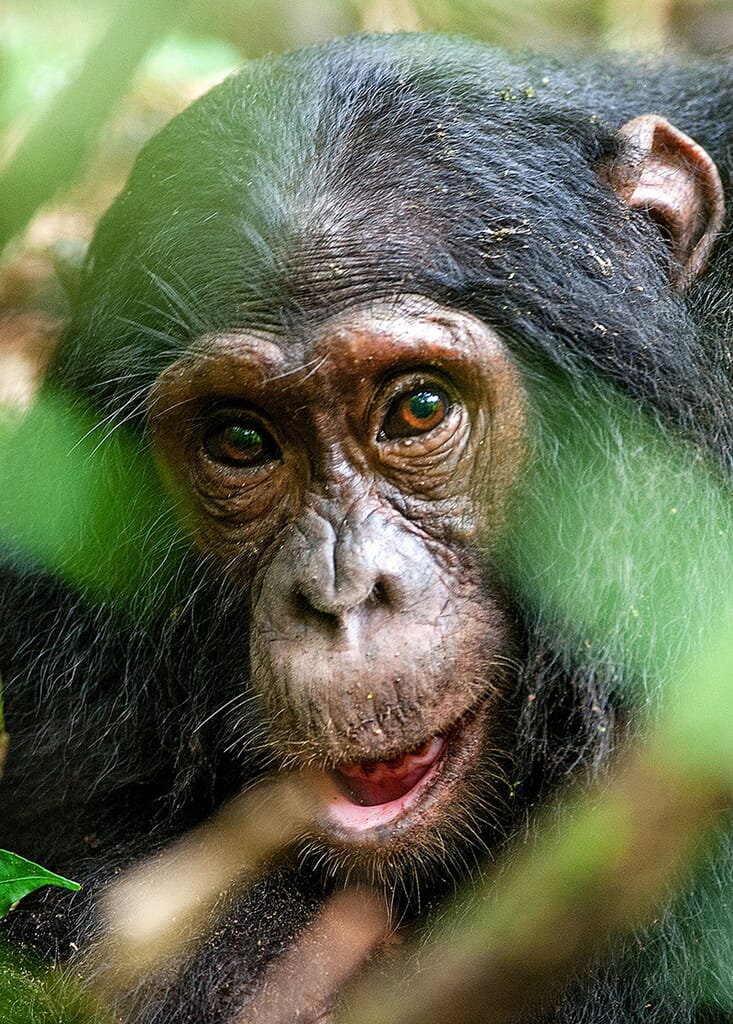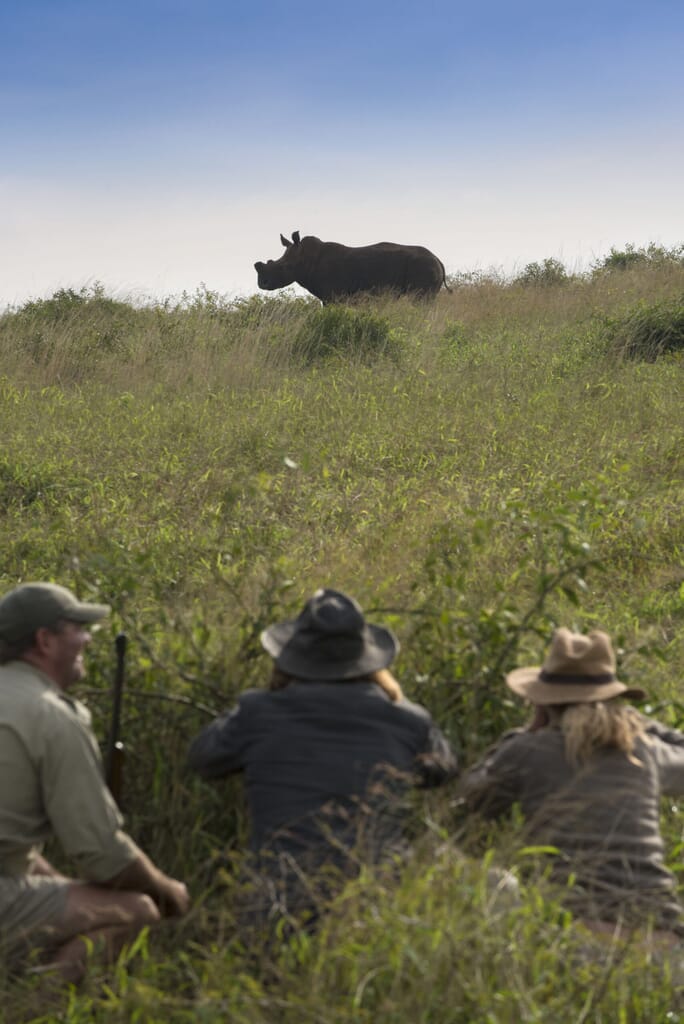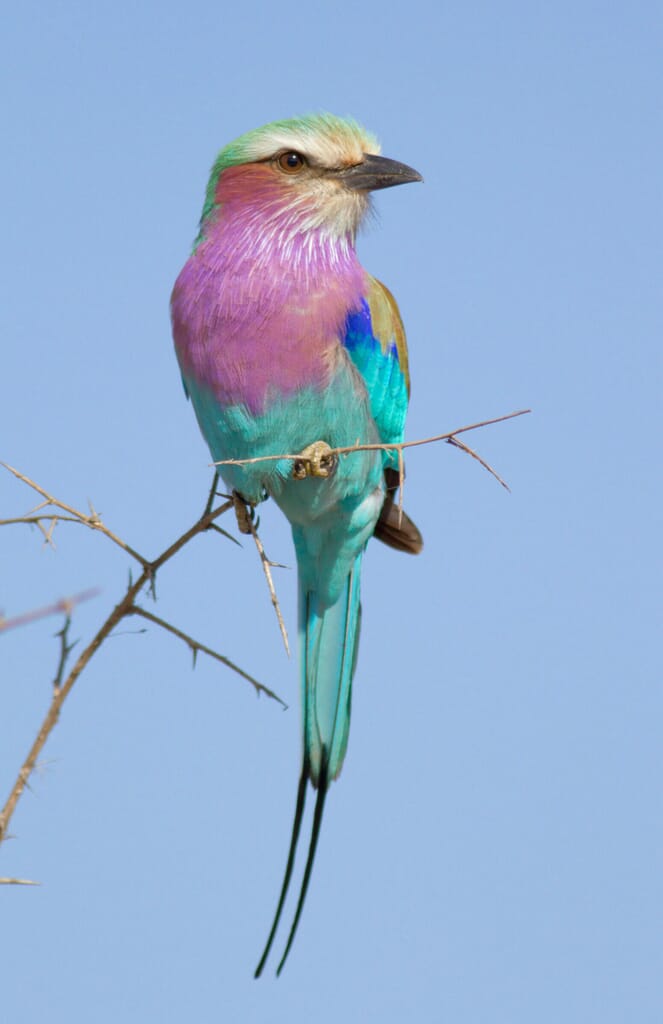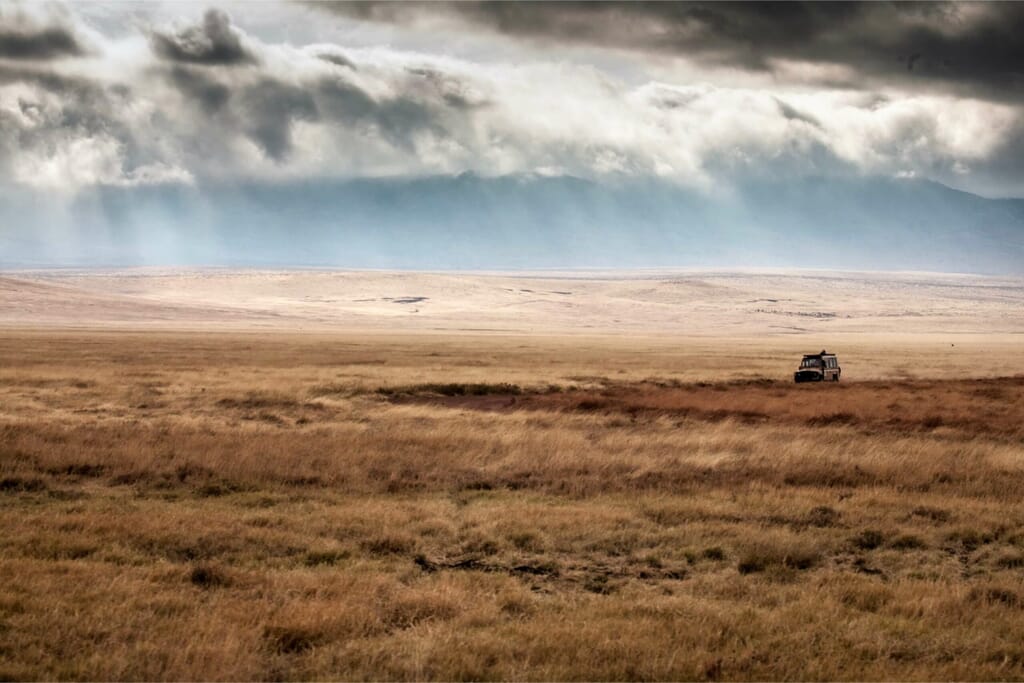Where is Kibale National Park?
Kibale National Park is located in the west of Uganda and runs from the highlands of the Fort Portal plateau in the north to the Albertine rift valley in the south. This unique location creates the perfect environment for such a diversity of habitat and species that are found in Kibale forest.
The park can be accessed via a long drive west from Entebbe or, more commonly, a light-aircraft flight to Kasese, in the shadow of the Rwenzori ‘mountains of the moon’.
What to do?
The highlight of a visit is, undoubtedly, walking with chimpanzees in the lush, tropical forest. We recommend at least one day of chimp tracking, or two for those visitors looking to really get to know the forest.
In addition to the chimp tracking, the region in which the park is located is home to over 28 volcanic crater lakes. We highly recommend spending some time walking around the lake shores, or even from one lake to another. Depending on where you are staying, this can either be done directly from your accommodation, or your guide can arrange a guided walk.
Kibale National Park is also a fascinating destination for a bird safari. Some of the most spectacular and beautiful bird species in East Africa can be found here. If you’d like to learn more about our feathered friends, then we suggest including a birding hike in your itinerary.
The crater lakes region is also a wonderful place to just relax and enjoy the stunning views. If you arrive here at the end of your Uganda safari, or if you’ve had a long journey, we recommend extending your stay to soak up the surroundings and take a breather from the safari action.
Who should go?
We recommend Kibale and the surrounding crater lakes for visitors of all ages. The minimum age for chimpanzee tracking is 15, so this needs to be taken into account when planning your itinerary, if you have young children. Outside of the chimpanzees, there is lots to do for everyone in the family.
Kibale National Park has a lovely climate all year round, particularly in the crater lake region, due to higher altitude. Conditions for chimpanzee tracking are best from June to September, and December to February. This coincides with the driest time of year, when the forest trails are most accessible.
